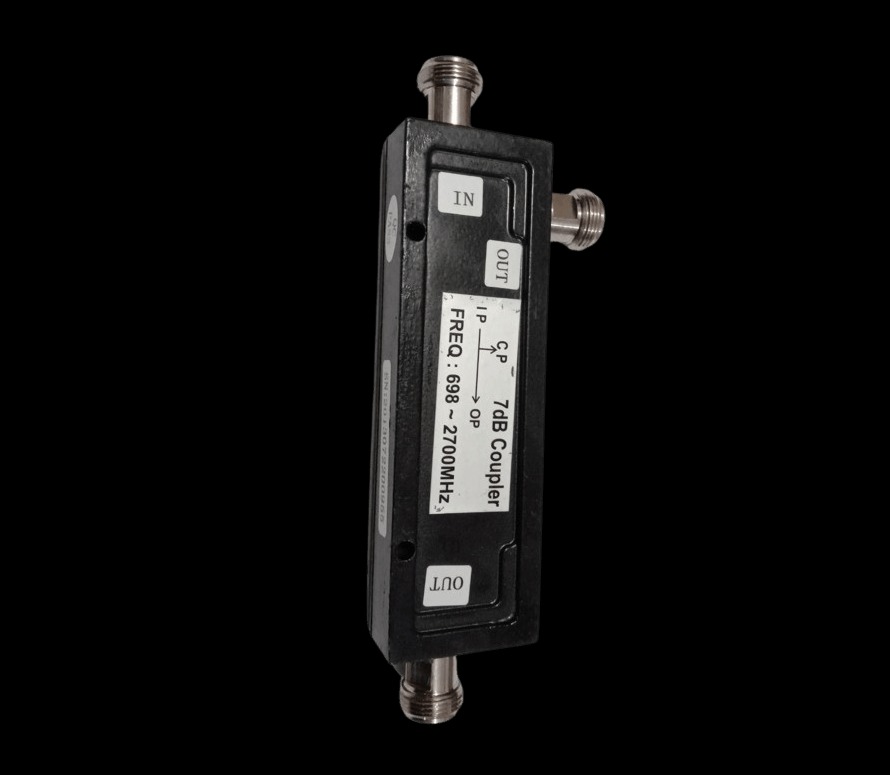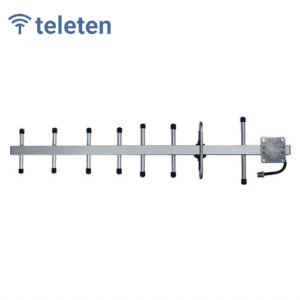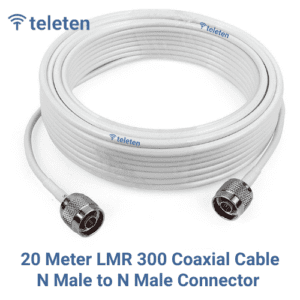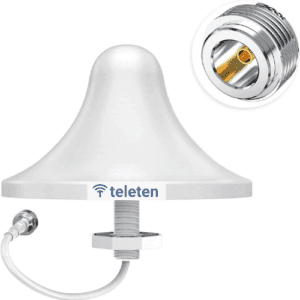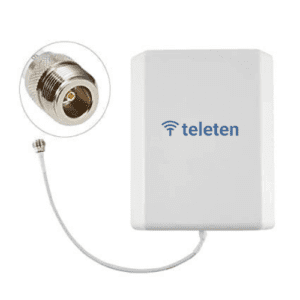Frequency Range: 698 MHz to 2700 MHz
This range includes several important communication and broadcast frequencies, such as those used in cellular networks, Wi-Fi, and other RF applications.
Coupling Factor: 7 dB
The coupling factor indicates that the output signal is attenuated by 7 dB relative to the input signal. Consequently, the coupled signal power is approximately 1/5 of the input signal power.
Directivity: Typically 10 dB to 15 dB
Directivity measures the isolation between the input port and the coupled output port. Higher directivity values signify better isolation and reduced signal leakage, which is critical for accurate signal monitoring.
Insertion Loss: Typically 0.5 dB to 1.0 dB
Insertion loss refers to the amount of signal power lost when the coupler is inserted into the signal path. Lower insertion loss values are preferable as they indicate minimal signal attenuation.
Return Loss: Typically 15 dB to 20 dB
Return loss measures how well the coupler matches the impedance of the transmission line. Higher return loss values suggest better impedance matching and reduced signal reflection.
Power Handling: Typically 10 W to 50 W
This denotes the maximum power the coupler can handle without sustaining damage. The power handling capability depends on the design and construction of the coupler.
Connector Type: N-type Female
The coupler features N-type female connectors, which are known for their durability and suitability for high-frequency applications. These connectors are threaded to ensure a secure connection with male connectors.
Construction: Typically made from high-quality materials such as aluminum or brass with dielectric materials like PTFE (Teflon)
The materials used affect the coupler’s performance, durability, and frequency response.
Dimensions: Varies by model
The physical size and form factor will depend on the specific design of the coupler. Ensure that it fits within the physical constraints of your system.
Environmental Conditions:
Temperature Range: Typically from -40°C to +85°C
Humidity: Generally up to 95% non-condensing
Key Considerations:
Signal Attenuation: With a 7 dB coupling factor, this coupler provides a moderate level of attenuation, which is suitable for applications where a moderate signal sample is needed for measurement or monitoring.
Performance: Look for good directivity and low insertion loss to ensure minimal signal disruption and accurate monitoring.
Versatility: This coupler is versatile and can be used in a range of RF applications including network testing, signal measurement, and signal distribution.

